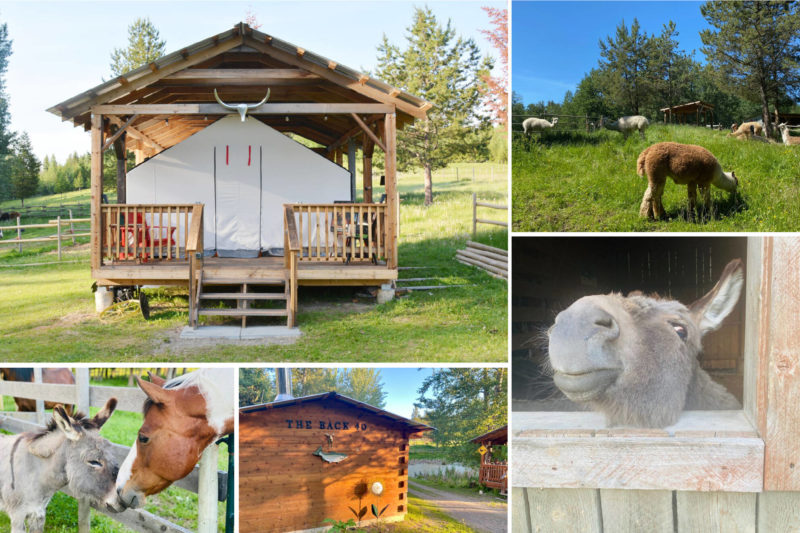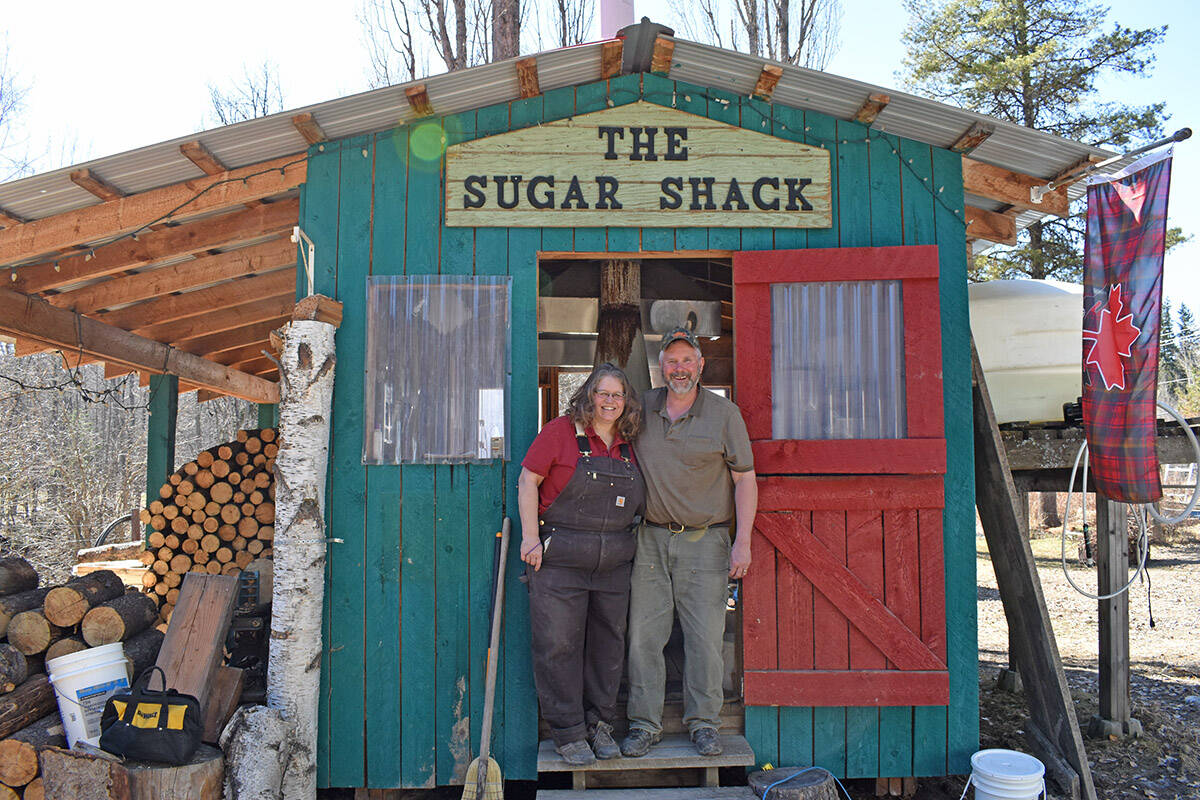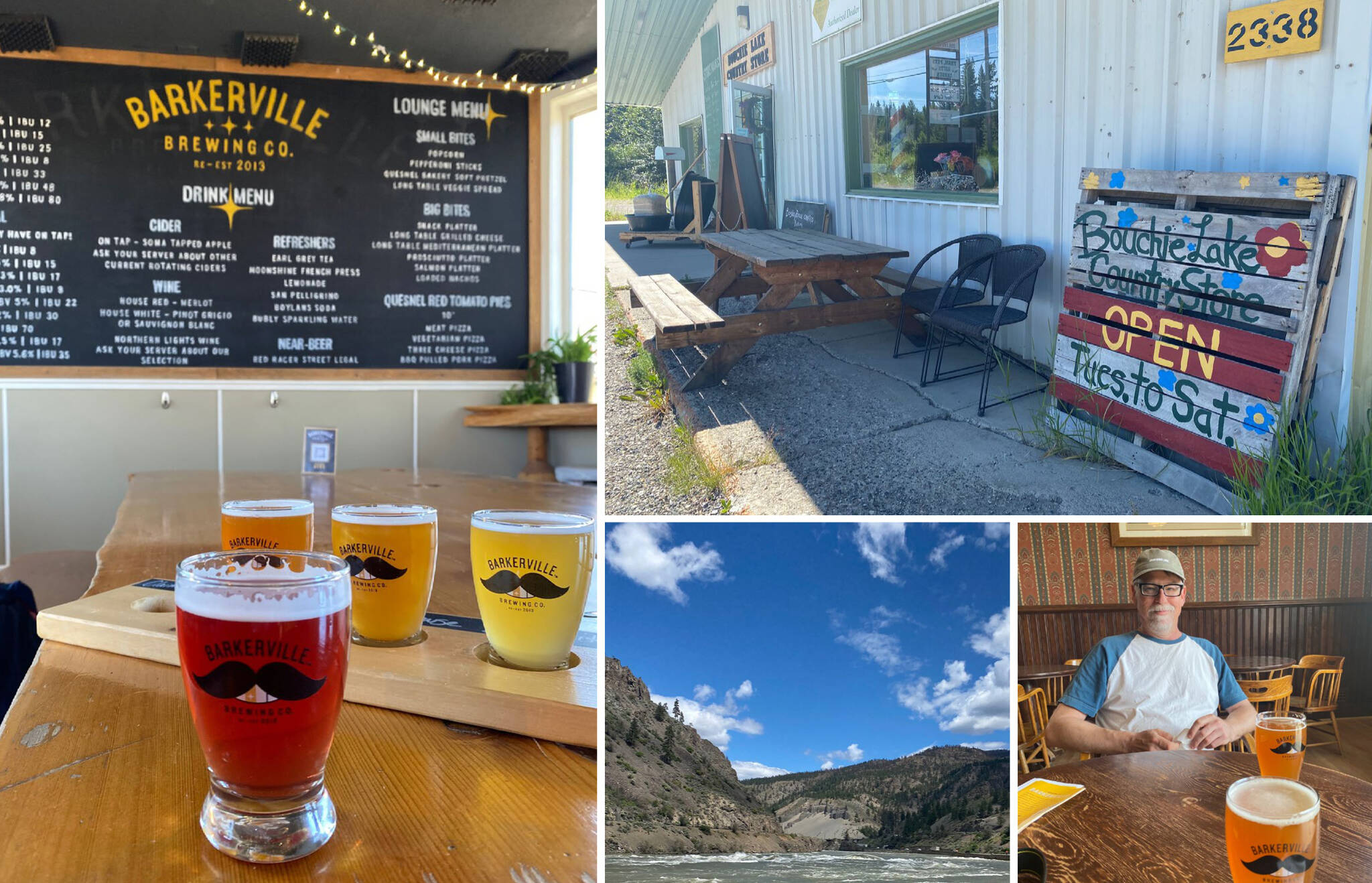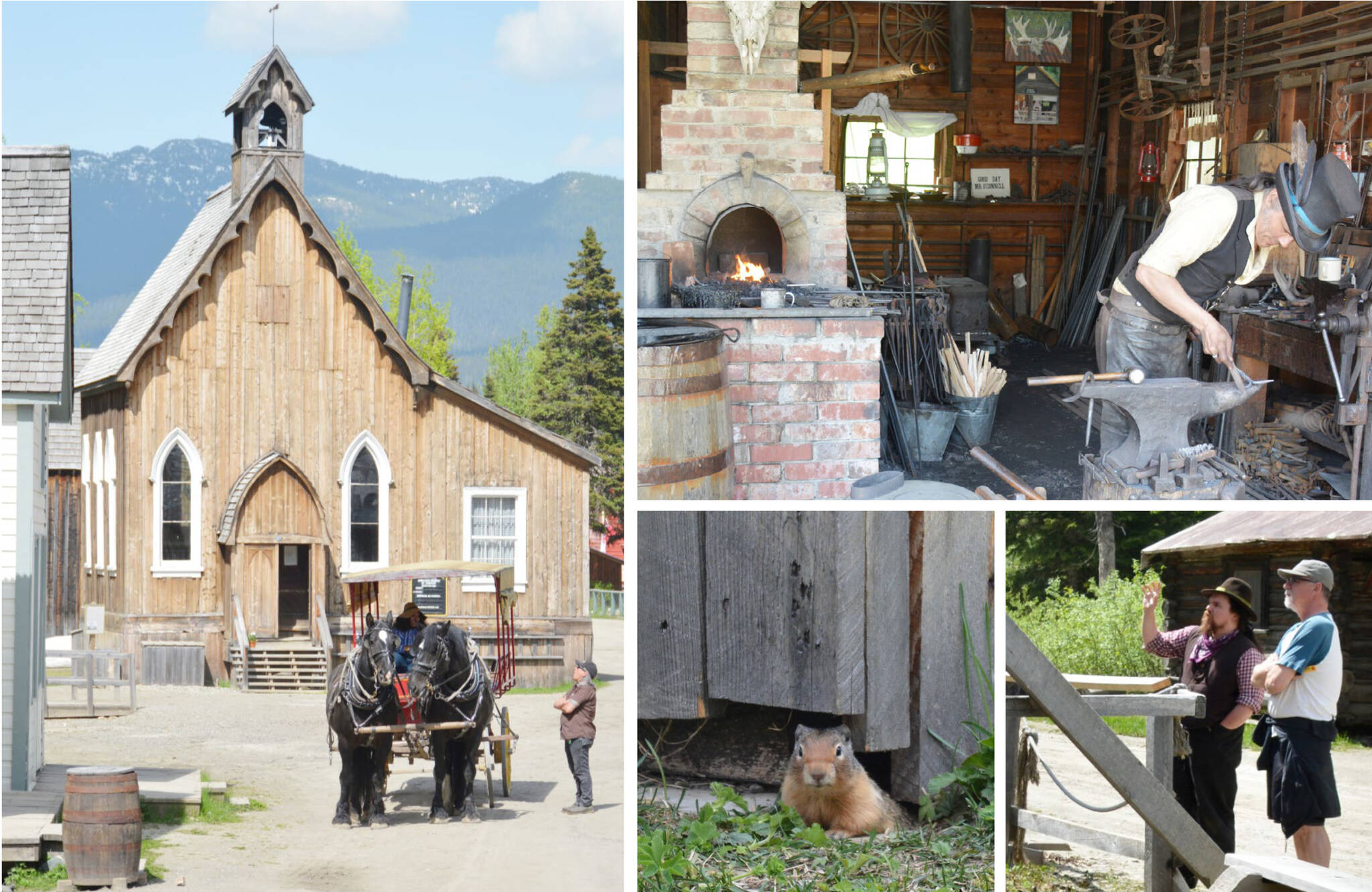An extended long-weekend jaunt to the Cariboo isn’t always top of mind for those in southwestern British Columbia, but a recent getaway has me thinking that it should be – for the beautiful vistas, heritage sites and outdoor adventures, certainly, but also for the warm hospitality that awaits.
Leaving Vancouver around 9 a.m., the eight-hour drive north was unhurried and without much traffic once we passed through the congested Fraser Valley. While we were set on arriving at our destination by dinner, more leisurely travel would allow time to explore stops like Hell’s Gate in the Fraser Canyon, the quaint community of Clinton, or the various lakes, parks and towns found along the way.
But we were focused on the destination this time – in particular, the base for our weekend explorations, Moose Meadows Farm, a B&B and working farm in Bouchie Lake, about 15 minutes outside Quesnel.
The home of Ted Traer and Heloise Dixon-Warren, Moose Meadows is at once a relaxing country getaway for visitors, and a year-round hive of activity.
In the spring, Ted works tirelessly sugaring off his birch syrup – without the excessive sweetness of its maple cousin, it’s a favourite for its depth of flavour for cooking, marinades and vinaigrettes. With hundreds of litres collected from local trees, Ted uses a wood-fired evaporator to concentrate the flavour before bottling.
Summer brings shearing time for alpacas, whose soft wool is sold at the couple’s nearby Bouchie Lake Country Store, and time tending crops of raspberries, haskap, Saskatoon and currant berries, plus flavourful garlic, among other delights. Fall at the farm brings a furious assembly of holiday wreaths, swags and centrepieces, hand-crafted and shipped across North America.
Year-round – and a true delight for farm guests – are the animals, including horses, alpacas, several sheep, a rooster and hen, and a delightful trio of inseparable donkeys.
But back to the hospitality.
With warm smiles and Heloise’s wonderfully contagious laugh, the two welcomed us to their pastoral, 65-acre property of gently sloping fields dotted with evergreens, cottonwoods and birch.
In the middle of the various paddocks was our “home-away-from-home” for the weekend, a brand new “glamping” tent of sturdy canvas atop a raised wood floor, outfitted with an oh-so-comfy custom-built bed and a front porch that offered the ideal spot to sip our morning coffee.
Additional accommodation is available in “the Groom’s Quarters” a comfy, beautifully furnished suite above the barn. While there’s no running water, wifi and other amenities are readily available and both accommodations are served by two impeccable (truly!) outhouses. A well-appointed picnic shelter is located adjacent to Cattail Pond – home to a muskrat family – and “the Back 40” is an outdoor, wood-fired sauna that’s also available to overnight guests for a small fee.
Exploring Quesnel
Morning sunlight roused us from a regenerative sleep, coaxing us out to the porch for a morning tea as we planned the day’s adventures.
Savouring the first warm weekend of the season, we enjoyed a stroll along Quesnel’s picturesque Riverfront Trail, watching the Fraser River rush by, swollen with the late spring snow melt, but staying safely below the banks.
The city is positioned at the confluence of the Fraser and Quesnel rivers and the trail is a great way to explore. Now more than 12-kilometres long, the trail starts from “kilometre 0” at what was until recently called Ceal Tingley Park, now renamed Lhtako Dene Park this past National Indigenous Day. You can even cross over the mighty Fraser via a pedestrian bridge for a unique view of the iconic British Columbia waterway.
Beyond its riverfront location, Quesnel is an historic city, the site first home to the Lhtako Dene people. Settled first by fur traders from the East (Fort Alexandria, located south of Quesnel, was constructed in 1821) the Cariboo Gold Rush of 1862 brought prospectors and fortune-seekers, a legacy reflected today in many of the region’s historic buildings and longstanding events, including July’s Billy Barker Days. Enjoy a self-guided walking tour of downtown Quesnel sites and discover key points in the city’s past.
Our own explorations eventually led to Barkerville Brewing, the city’s only craft brewery and part of the Northeast BC Ale Trail.
Named for the historic town of Barkerville, B.C. – and the afore-mentioned William “Billy” Barker – this award-winning brewery pours a selection of core beers and seasonal offerings from its inviting tasting room at 185 Davie St. With names like Big Strike IPA, 18 Karat Ale and Sluice Juice hazy pale ale – a deliciously refreshing selection for our group – you can enjoy a pint or a flight inside at their custom-built Timber Kings table, or on the sunny patio, perfectly positioned to soak in spectacular sunsets.
Various non-alcoholic options are also available, and the food menu ranges from light snacks to heartier options including local, artisanal pizza from Red Tomato Pies. Children are welcome, accompanied by an adult.
And that mischievous moustachioed logo? Inspired by none other than the “Brewer of Barkerville,” Nicolas Cunio, who built the first Barkerville Brewery in 1865, between the Gold rush town’s drugstore and Masonic hall.
History on display
Inspired by the story-rich brewery and a love of B.C. history, Day 2 took us 80 kilometres east to the Barkerville National Historic Site itself, about 75 minutes from Bouchie Lake, along a picturesque drive winding through forest, lakes and wetlands.
Stop at Jack of Clubs Lake to stretch your legs (beautiful, but bug repellent is recommended in summer!) or continue on to the small community of Wells. Here, colourful buildings host eateries, artisans and services for locals and visitors on their way to Troll Ski Resort, Barkerville or Bowron Lake Provincial Park where its 116-kilometre canoe circuit feautres a chain of lakes, waterways and connecting portages. As a note, Wells is also home to the only gas station along the route once you leave Quesnel, so be prepared.
From Wells, it’s just a few minutes to Barkerville. Arriving in the last week of June, the summer crowds had yet to arrive, but the largest living-history museum in western North America still offered numerous interactive opportunities.
Founded in 1862, with Billy Barker’s gold discovery, the town grew quickly before burning to the ground in 1868, when it was re-built almost immediately.
The importance of that strike is considerable to the history of the province: “Barkerville became a cornerstone in the development of Canada and the founding of British Columbia. It is the site of the first-ever Dominion Day celebration and is the town that supplies the Cariboo Gold Rush,” the website notes.
Today, beyond strolling the elevated boardwalks and browsing numerous displays, visitors can also chat with actors depicting some of the many unique characters who made their home here and sharing the rich history.
Pondering the Cornish waterwheel and flume, we were greeted by the “chief engineer” who shared the history and how-to of the essential mining tool. At the Cameron & Ames Blacksmith Shop we watch as the blacksmith worked hot metal into useful fire pokers and other tools.
By the mid-1880s, Chinese residents made up half of the Cariboo region’s population, a history reflected in Barkerville’s Chinatown, “home to the oldest Chee Kung Tong building in Canada and the most extensive collection of Chinese buildings, photographs and artifacts in North America.”
With the town’s location on the shared ancestral territories of the Dakelh and Secwépemc Peoples, we were also keen to learn more of the region’s Indigenous history from Mike Retasket, a storyteller, traditional pipe carrier, dancer, drummer and singer, and Cheryl Chapman, who at Barkerville plays her great-grandmother, Lucie Sellars, who was born at Xat’sull (Soda Creek) in 1867. Chapman and Retasket share stories of the many Indigenous groups (mainly Secwépemc and Carrier) who lived and traded at Barkerville, as well as modern truths about their culture.
READ MORE: How storytelling in tourism can support truth and reconciliation
Those visiting through summer can explore deeper with everything from Victorian schoolhouse lessons and guided town tours to Barkerville cemetery tours and Chinese cultural sessions. How did miners spend their downtime? Enjoy an hour of music, comedy and fun with daily shows at Theatre Royal.
Barkerville’s buildings are also home to a variety of shops, services and restaurants – stop for lunch at the Wake Up Jake, sip a beverage from Barkerville Brewing at the House Hotel Saloon, purchase delicious, fresh-baked sourdough from Goldfield Bakery, or explore the unique offerings at Kwong Sang Win Chinese Store. (And yes, you can actually stay at the park as well, with several B&Bs and cottages available to rent.)
Back at Moose Meadows, we returned “home” in time for a casual dinner enjoyed with good company around the campfire and a well-earned sleep after the day’s adventures. And while we may not have seen any moose at the meadows, the farm’s alpacas waited politely outside the tent door to bid us farewell the next morning.
If you go:
• Moose Meadows Farm: Learn more at moosemeadowsfarm.ca or call
• Barkerville Brewing: Visit in downtown Quesnel at 185 Davie St., call
• Barkerville National Historic Site: The National Historic Site is located 81 kilometres east of Quesnel, at the end of Highway 26. Call
Plan your adventures throughout the West Coast at westcoasttraveller.com and follow us on Facebook and Instagram @thewestcoasttraveller. And for the top West Coast Travel stories of the week delivered right to your inbox, sign up for our weekly Armchair Traveller newsletter!














 Explore like a local in Boundary Country this summer
Explore like a local in Boundary Country this summer